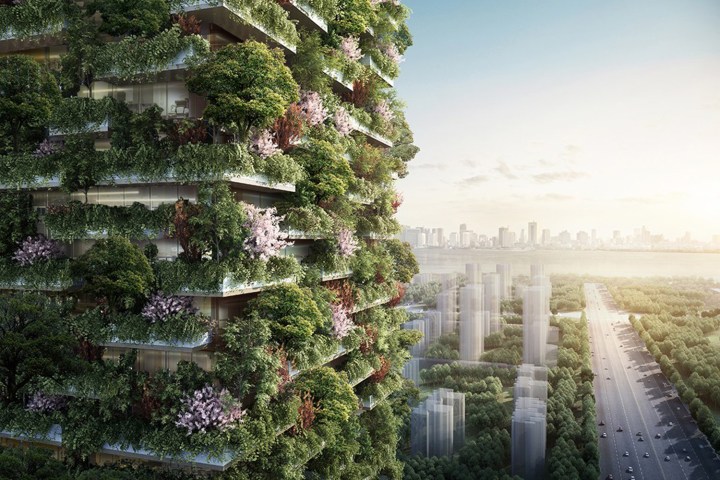
The environmental idea was simple: grow the number of plants on the building that would otherwise grow on the ground it will occupy. Offset the structure’s physical footprint by using the building as a growing space. In the case of the original Vertical Forest, that included nearly 12,000 square yards of forest.
But Boeri was also concerned with aesthetics. “The idea of the Vertical Forest was born several years ago, as a way to contrast what had become a stylistic trend in the architecture of skyscrapers,” Boeri told Digital Trends via email, “[That is,] the excessive amount of glass on facades and the thermal effects that it has in our cities.” Boeri set biodiversity as the end goal. “From this reflection came the idea to include not only green surfaces but also trees that could … reduce the amount of CO2 and dust particles in the atmosphere,” he said.
Following the success of Milan’s vertical forests, Boeri and his studio were commissioned for another pair of towers in Lausanne, Switzerland. Now, Stefano Boeri Architects will oversee a third pair of buildings in Nanjing, China.
Some 600 tall trees, 500 smaller trees, and 2,500 plants and shrubs will call the Nanjing’s Vertical Forest home, grown from concrete pots built into the balconies. With that many plants, the buildings have the capacity to suck some 25 tons of carbon dioxide out of the atmosphere every year while pumping around 130 pounds of oxygen back in each day, according to the studio. Still, as New Atlas notes, the amount of extra concrete needed to support these plants may undermine the studio’s aim for sustainability.
Boeri acknowledges his effort is just one of many that are needed. I believe the Vertical Forest prototype is a kind of approach, but not the only one, ” he said. “It allows the possibilities to be evolved into multiple shapes or even to include variations; we hope that this project will positively influence the architectural trend. Nevertheless the relevance of our prototype relies not only on its stylistic value but also on its potential to improve urban environments. It is not a possibility but rather a responsibility.”
The two towers will occupy over 6,550 square yards of land, with one building reaching over 350 feet and the other over 650 feet. The shorter of the two will contain a Hyatt hotel with a swimming pool on the roof. The taller will include a museum, a sustainable architecture school, and a private club on top.
The Nanjing buildings are planned for completion next year.




